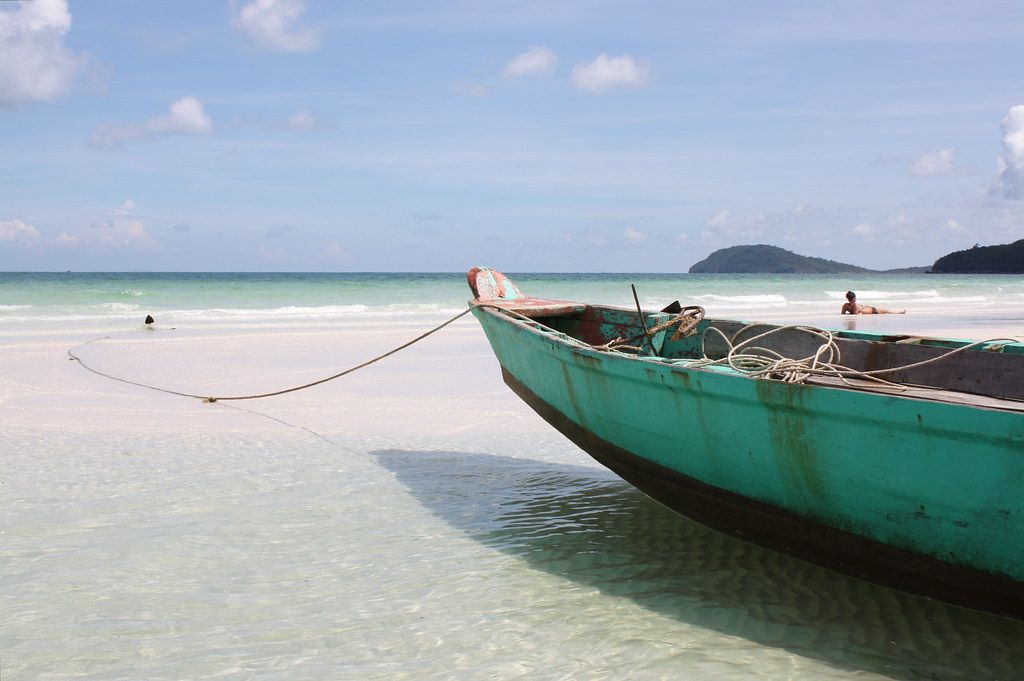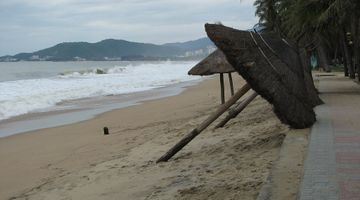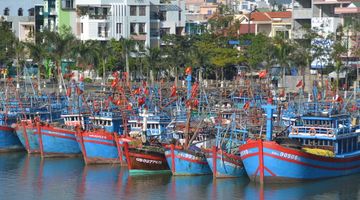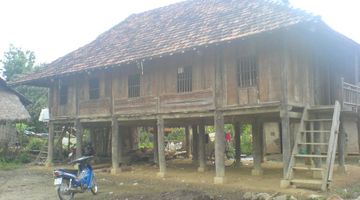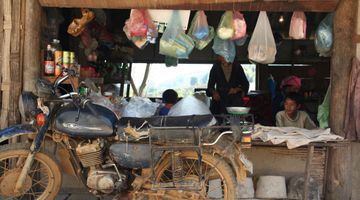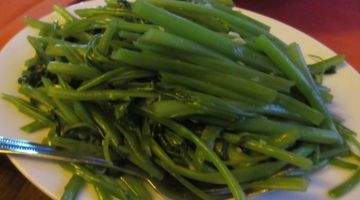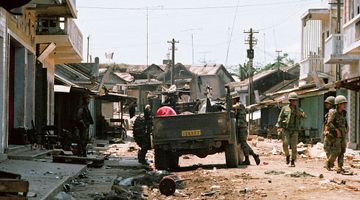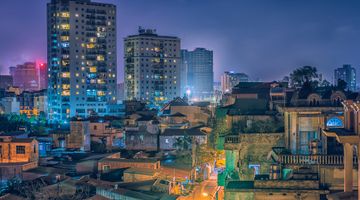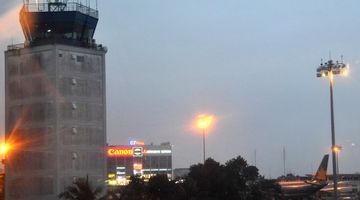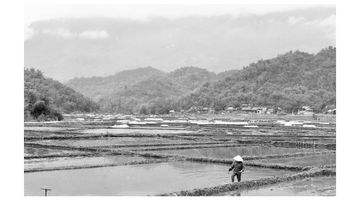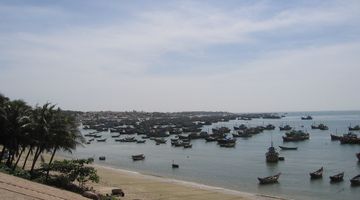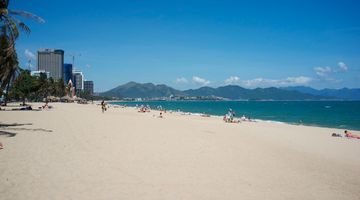Phu Quoc
In a nutshell
If you are seeking a reprieve from the smoggy and buzzing urban centers of Hanoi or Ho Chi Minh City, then Phu Quoc is absolutely the place to go.
Why go to Phu Quoc
This lush, green island gem off the southern coast of Vietnam has flown under the radar for a long time, but the island has recently been undergoing impressive development in order to accommodate the growing number of tourists seeking white sand beaches, tranquil blue waters, and breathtaking green jungles.
This small island can be crossed by motorbike in less than an hour and half and is home to Vietnam’s most beautiful beaches.
However, this destination offers its visitors more than just hammocks for beach napping. Here outdoor opportunities abound: jungle tours, snorkeling, fish markets with baskets a-plenty of the sea’s catch, day trips to gorgeous nearby archipelagos, or even a history lesson with a visit to the lesser known Coconut Tree Prison, the prison the French built during Vietnam’s colonization that was later used by Americans during the Vietnam War.
Since there is a diversity of activities on Phu Quoc island, we recommend boking a trip a few days longer than a weekend getaway in order to enjoy all the potential Phu Quoc has to offer.
When to go to Phu Quoc
In southern Vietnam the weather stays relatively hot all year-round, but we would avoid the rainy season (May through October) and the unbearably hot month of April, if possible.
Tourists flock to the island in peak travel season from December to February and during Tet holiday. If you are planning a visit to Phu Quoc during this time, book your accommodations well in advance and know that hotel prices may increase significantly during the heavy tourist season.
As Phu Quoc continues to grow in popularity, you will be glad you planned a trip in advance no matter what time of year you visit.
Where to stay in Phu Quoc
Even as Phu Quoc rapidly becomes a hot attraction for large hotel chains and resort developers, there luckily is a range of accommodations to choose from and options to fit your budget.
If you are looking for an all-out luxury beach vacation, steeped in relaxation and great service, then the VinPearl Resort might be the spot. If you are more in the mood to avoid the beach-crazed crowds and enjoy more of the unspoiled natural wilderness of the island, a more secluded and mellow option like the “nature-focused” Mango Resort might be your ideal accommodation. Kiki Coconut Stay is also a wonderful option for those who want a taste of what Phu Quoc is like without all the tourists and flashy resorts.
What to eat in Phu Quoc
Phu Quoc has a number of cheap, local restaurants in addition to more expensive resort dining. There are also a number of bars on the beach that cater to the island’s backpackers, serving pizza, hamburgers, sandwiches, and other popular international eats.
Beachside eating is a must, and the opportunities and diversity of choices are numerous in Phu Quoc.
Of course, sea food is the star of the culinary scene, and you can get it served while seated in plastic chairs or with tablecloths at fine French dining beachside restaurants. Either way, you will enjoy your fresh seafood with a spectacular sunset.
Getting around in Phu Quoc
Exploring Phu Quoc by motorbike is by far the cheapest, most fun, and best way to explore all of the island’s attractions.
Tip However, tourists need to proceed with caution: an international driving permit is required for foreigners to drive a motorbike and this law is enforced. Authorities target tourists and crack down on motorists who drive without this permit, and fines can reach upwards of USD100.
Motor-taxis or hiring a driver is an option for those who cannot or do not wish to drive a motorbike. If you decide to drive a motorbike, renting is cheap and easy, just make sure you have a permit and travel insurance.
Getting to and from Phu Quoc
With a new international airport, the most popular way to get to Phu Quoc is by plane.
Flights from Hanoi and Ho Chi Minh City are plentiful, but be mindful that domestic flights are often delayed or late. There is not much that can be done to avoid this, and we recommend flying Vietnam Airlines versus a budget carrier (as they can be exceedingly inconvenient with delays), but overall a decision to go by plane is a good one that will save you time.
From Hanoi, a direct flight will be about 2 hours long and cost between USD150 or USD190 roundtrip. From Ho Chi Minh City, the direct flight is only about an hour and a roundtrip ticket will range in cost from USD56 to USD94.
Getting to Phu Quoc by boat is also an enjoyable option, given cooperative weather. A ferry departs daily from Ha Tien and Rach Ra (bus transfer can be purchased for a few US dollars). After the cost of a USD10 ferry ticket and an hour and a half ride, you will have crossed the sea and arrived to Phu Quoc.
This method of travel is not recommended during the rainy season however, as poor weather conditions require boat rides to be suspended, which then leaves tourists stranded and scrambling to book a flight.
If you are in Hanoi or northern Vietnam and have enough time, a train ride down the length of Vietnam is a fun, leisurely, and adventurous option for those who travel by backpack. We love this reliable option, especially if you have never ridden a train or want to watch Vietnam’s beautiful mountains and rice paddies roll slowly by from a train window.
Traveling the country by train is also a great way to stop and visit some of Vietnam’s hot tourist attractions like Hue, Hoi An and Da Nang as you make your way down south. We recommend booking sleeper cabins, as they are the most comfortable and can be quite fun when shared with friends (or newly made friends!).
Safe travel in Phu Quoc
Overall, Vietnam is an incredibly safe country to visit. Use common sense, be aware of your surroundings when going out to bars or to eat, and lock your room. It is especially important for tourists to be on the lookout for scammers and petty theft, such as pick-pocketing.

